John’s journey: Overcoming adversity to secure a $500,000 Total Permanent Disability (TPD) claim
John’s Journey: Overcoming adversity to secure a $500k TPD Claim Jump to Result This image does not depict our actual client. John’s story In July
At GMP Law, we have extensive experience in class action lawsuits, amplifying the voices of individuals who have experienced similar harms or losses.
Gerard Malouf & Partners Manage Cases For Clients Across All Areas Of Personal Injury Law, Inheritance Disputes And Superannuation Disputes.
Gerard Malouf & Partners Have Provided Friendly, Experienced Legal Advice To Communities Across Australia For Over 35 Years. Our Personal Injury Lawyers Have Taken On Ten’s Of Thousands Of Cases And We Are Proud To Have Won Billions Of Dollars For Our Clients.
Read Our Latest Articles, Case Studies Or Commonly Asked Questions Concerning Your Legal Claims And Compensation Law.
Our client had paid to participate in an endurance obstacle course and had signed a liability waiver (as required by the event organizer) acknowledging that the event was dangerous and waiving his right to compensation. Our client has then in the course of the event sustained a horrific injury whereby he injured a finger on his dominant hand, severely disfiguring him.
Our client approached Gerard Malouf & Partners unsure about his right to compensation in the circumstance where he had signed a waiver.
We commenced proceedings in court on behalf of our client, however the Defendant attempted to hide behind the waiver and claim that as the client had signed this waiver document they were not liable to pay compensation for his injuries.
The team at Gerard Malouf & Partners were able to show, through the extensive subpoena material obtained, that our client’s injury was caused as a result of the organiser’s negligence outside of the scope of the waiver. Subpoena material showed that shoddy workmanship was the result of hazard which caused our client’s injury. The event organiser had failed in their duty of care to the client by allowing the hazard and failing to take any precautions against the foreseeable risk of harm.

Public liability refers to the responsibilities owners or occupants of public space have to protect anyone who enters. If the owners or occupants fall short of these responsibilities, resulting in an injury, a case for compensation can be made.
Some of the most common incidents covered by public liability law include:
Following an initial meeting, the first task will be to establish the general facts of the case. This will include your medical diagnosis, which will need to be confirmed and documented by a doctor; and proof that the person or company at fault owed you a duty of care, which will need to be demonstrated. Together, this will show that your injury occurred when they breached that duty of care.
From there a further investigation will proceed—contacting and interviewing witnesses, speaking with expert consultants, and more—all in order to bolster the strength of your case even further. Only once this process is complete, and your claim can be demonstrated and proven in full, will the process move on to the next step.
There are time limits involved with public liability claims, so it’s important to make a claim as soon as possible to ensure you remain eligible. Usually, individuals have three years from the date of injury to file a claim but this may differ by state and it is often best to start the claims process as early as possible.
John’s Journey: Overcoming adversity to secure a $500k TPD Claim Jump to Result This image does not depict our actual client. John’s story In July
Case Overview Our client presented to a vascular surgeon, seeking treatment of her varicose veins in her right leg. Following the surgeon’s recommendation, our client
Case Overview A woman from Green Valley was a passenger in a car when the driver lost control of the vehicle, leading to a collision
Case Overview At the time of her injury, our client was working as a cleaner at a private residence in Kurrajong. During the course of
Case Overview We acted for a client from Western Sydney who was involved in a serious motor vehicle accident. The other driver collided into our
Case Overview We acted for a client from Coffs Harbour who was involved in a serious motor vehicle accident. The driver failed to give way






Your location is currently:
Please wait while you are redirected to the right page...